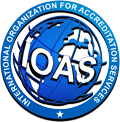What is ISO/IEC 17025 Accreditation
Testing Labs vs Calibration Labs.
For Testing Laboratories the scope must include the tests or types of tests performed and materials or products tested and, when necessary, which methods used. For Calibration Laboratories the scope must include the calibrations, encompassing the types of measurements performed, the Calibration and Measurement Capability (CMC) or equivalent.
Most testing research facility extents of accreditation do exclude proclamations or appraisals of estimation vulnerability, making it trying for clients to look at the ability and nature of testing labs.
In this industry, the extent of accreditation ought to permit clients to unhesitatingly discover and choose a research center that will meet their necessities and give consolation. That is the reason working with a research center that is certified to ISO/IEC 17025 is perfect.
Below, you will find testing and calibration labs and their parameters. Please expand each tab for more information.
Testing Areas and Parameters
Calibration/Measurement Areas and Parameters
How to Apply for Accreditation.
The application for accreditation starts with the filling of the form and submit it duly filled. The accreditation process is followed by an assessment- onsite and offsite.
The conclusion on the process of issue of accreditation finishes off with the decision-making for the accreditation.
The applicant can apply by filling out the online/offline application.
The application form can be downloaded through the below link.
IOA Services Accreditation is granted to an organization that can demonstrate compliance with national/international standards.
The details of the standards can be obtained from the relevant website of ISO or the national standard organizations.



